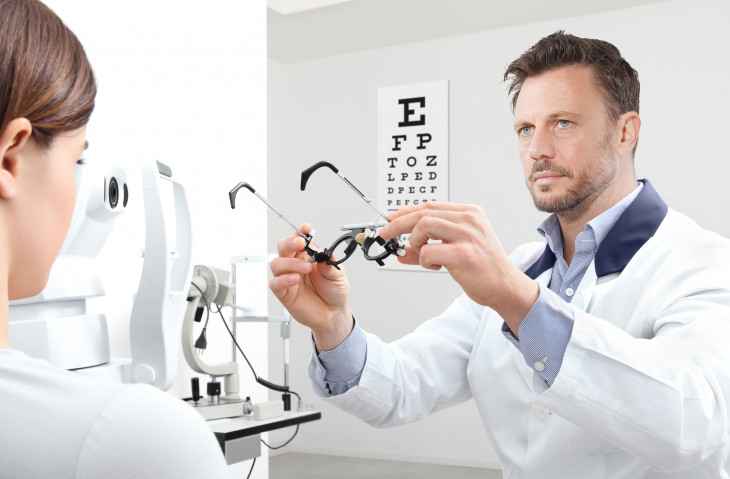How an Eye Doctor Can Help Avoid Vision Problems in Chino
How an Eye Doctor Can Help Avoid Vision Problems in Chino
Blog Article
Discovering the Most Recent Technical Improvements in Optometry and What They Mean for Optometrists
From the precision of Optical Comprehensibility Tomography to the nuanced insights provided by AI-driven diagnostic devices, these developments are establishing brand-new criteria in patient analysis and treatment. As these improvements penetrate the method, eye doctors are faced with the obstacle of welcoming these tools to improve client outcomes.
Advancements in Diagnostic Tools
Advancing the field of optometry, technologies in analysis devices have reinvented the means eye treatment professionals assess and diagnose visual impairments and eye problems. The past years has actually experienced substantial technological innovations, enabling more extensive and precise evaluations. Optical Coherence Tomography (OCT), for example, provides high-resolution cross-sectional pictures of the retina, enabling the early detection of illness such as glaucoma and age-related macular deterioration. This non-invasive imaging technique has ended up being important in modern optometric technique.
An additional secret technology is the intro of sophisticated corneal topography systems, which map the surface area curvature of the cornea with accuracy. These tools are particularly helpful for suitable contact lenses and identifying corneal problems. Electronic retinal imaging has actually changed traditional ophthalmoscopy, offering thorough, breathtaking sights of the retina that facilitate extensive aesthetic assessments.
The advancement of wavefront aberrometry has additionally been essential, enabling the evaluation of refractive mistakes with unparalleled accuracy (Optometrist Chino). This technology aids in customizing corrective lenses and boosting surgical outcomes for refractive surgeries. Collectively, these diagnostic innovations equip eye doctors to supply premium person treatment, making sure early intervention and customized therapy approaches, eventually improving aesthetic health end results
AI in Individual Monitoring
Building on the structure of innovative analysis devices, the unification of fabricated knowledge (AI) in patient administration stands for a transformative jump for optometry. AI systems are increasingly utilized to boost performance, accuracy, and customization in patient care.
Moreover, AI-driven platforms help with streamlined patient communications and management processes. Automated scheduling, online consultations, and individualized follow-up strategies not only enhance client satisfaction however likewise optimize time administration for specialists. These systems can triage clients based upon the necessity of their conditions, guaranteeing that those in vital need get prompt focus.
In addition, AI improves decision-making by offering optometrists with evidence-based referrals and therapy pathways. By integrating information from digital health records, AI tools supply insights that inform clinical decisions, lowering the threat of errors and boosting individual outcomes. As AI remains to progress, its duty in person administration will likely expand, reshaping the landscape of optometric care.
Advances in Retinal Imaging
In the realm of optometry, retinal imaging has actually observed impressive technological advancements that are improving analysis capabilities and client care. Innovations such as Optical Comprehensibility Tomography (OCT) and fundus photography have changed how eye doctors examine the retina and imagine.
Enhanced imaging modalities like OCT angiography are more refining analysis accuracy. Eye Doctor. Such improvements facilitate the identification of min retinal changes that can indicate condition development.
Moreover, improvements in expert system are boosting retinal imaging by allowing automatic analysis of huge datasets. These systems assist eye doctors in recognizing patterns a sign of pathology, thereby improving diagnostic accuracy and performance. Jointly, these developments Read Full Report are changing retinal imaging right into a cornerstone of modern eye treatment, boosting end results and broadening healing possibilities.
Teleoptometry's Growing Role
Teleoptometry is increasingly becoming a crucial part of eye treatment, driven by improvements in electronic interaction and diagnostic devices. This is specifically helpful in underserved and rural locations where accessibility to specialized eye treatment is typically limited.
The combination of expert system (AI) more improves teleoptometry, making it possible for the evaluation of aesthetic data and assisting in the detection of eye problems such as glaucoma and diabetic person retinopathy. AI-powered formulas can rapidly translate complex imaging data, offering optometrists with important insights that strengthen scientific decision-making.
Furthermore, teleoptometry sustains connection of care through seamless assimilation with digital health records (EHRs), permitting optometrists to preserve comprehensive individual backgrounds. When consulting with various professionals., this makes sure that patients obtain consistent and customized care even.
Regardless of these benefits, obstacles remain, consisting of making sure information safety and handling person expectations. Teleoptometry stands for a considerable stride towards more obtainable, efficient, and patient-centered eye care. As modern technology develops, its role is poised to increase additionally.

Future Patterns in Eye Treatment
A myriad of ingenious fads is set to improve the future of eye treatment, driven by technical advancements and the developing needs of patients. One substantial fad is the assimilation of man-made knowledge (AI) in diagnostics, which promises to boost the precision and effectiveness of eye examinations. AI formulas can assess substantial quantities of information view website from retinal photos, possibly identifying conditions like diabetic retinopathy and glaucoma earlier than typical techniques.
Furthermore, customized medication is getting grip in optometry, with genetic screening informing tailored therapy plans. This approach intends to maximize individual results by tailoring interventions to individual genetic profiles. Wearable innovation, such as clever call lenses, is additionally imminent, offering real-time tracking of intraocular pressure or glucose levels, hence giving constant insights right into systemic and ocular wellness.
The adoption of augmented truth (AR) and digital truth (VR) in training and person blog education and learning is another emerging pattern. These innovations supply immersive experiences that can boost understanding and skills both for optometrists and people. As these trends advance, optometrists need to remain abreast of technological innovations to supply cutting-edge care, guaranteeing improved client outcomes and contentment in the vibrant landscape of eye treatment.
Final Thought

Jointly, these diagnostic improvements empower optometrists to deliver remarkable client care, making certain very early treatment and customized treatment strategies, eventually boosting visual health results.

As these modern technologies continue to develop, optometrists must adjust and incorporate them into method, inevitably optimizing workflow performance and boosting the requirement of eye care provided to individuals.
Report this page